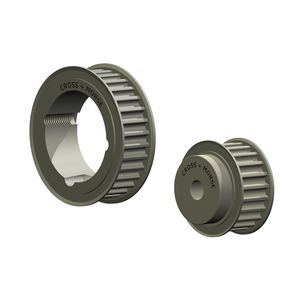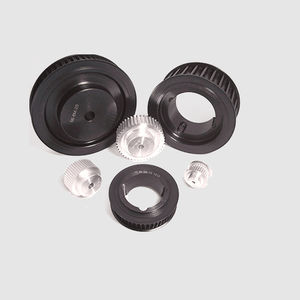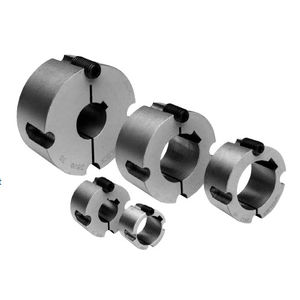
Toothed belt HTD nylonmetricdouble-sided



Add to favorites
Compare this product
Characteristics
- Type
- toothed
- Material
- nylon
- Other characteristics
- double-sided, metric
Description
Demands for ever increasing powers and speeds led to the introduction of a Metric Series of High Torque Drive Belts, using a parabolic tooth profile to enable increased tooth contact between belt and pulley. The new tooth profile has improved shear stress resistance, increased power capacity and reduced noise levels. Pirelli introduced the RPP belt with an indentation at the top of the teeth, to allow local elastic deformation during meshing with pulley, and easier air discharge to further reduce noise levels. Cross and Morse combine RPP belts with standard metric pulleys to provide off-shelf drives in 4 pitches; 3mm (3M), 5mm (5M), 8mm (8M), and 14mm (14M). Further development created RPP Silver Belts in 8mm (8S) and 14mm (14S) pitch with double power capacity; and RPP Gold Belts in 8mm (8G) and 14mm (14G) pitch with treble capacity; both still operating on standard metric pulleys allowing full interchangeability with existing drives. Drives up to 800 KW can now be transmitted.
Double Sided Metric Belts
Double-sided belts have teeth equally constructed on each side of the belt, which enables them to mesh with toothed pulleys on both the inside and outside. The construction of the belts is basically the same as standard Metric belts, except that the nylon facing is also on the backing teeth, enabling full torque transmission from each side of the belt.Standard Double sided belts are available in three sizes, 5M, 8M, and 14M, all operating on standard HTD pulleys.
Timing Pulleys
Only high quality materials are used for pulley manufacture; aluminium being selected for 3M and larger 5M pulleys to keep weight and inertia low;
Catalogs
Classical Timing Belts
3 Pages
Related Searches
- Power transmission belt
- Cross & Morse flexible coupling
- Cross & Morse shaft coupling
- Transmission chain
- Cross & Morse flange coupling
- Cross & Morse torque coupling
- Cross & Morse rigid coupling
- Metal chain
- Roller chain
- Plastic strip
- Friction clutch
- Cross & Morse transmission coupling
- Sleeve shaft coupling
- Timing belt
- Compact coupling
- Steel chain
- High load capacity coupling
- Synchronous power transmission belt
- Belt pulley
- Cross & Morse torque limiter
*Prices are pre-tax. They exclude delivery charges and customs duties and do not include additional charges for installation or activation options. Prices are indicative only and may vary by country, with changes to the cost of raw materials and exchange rates.








